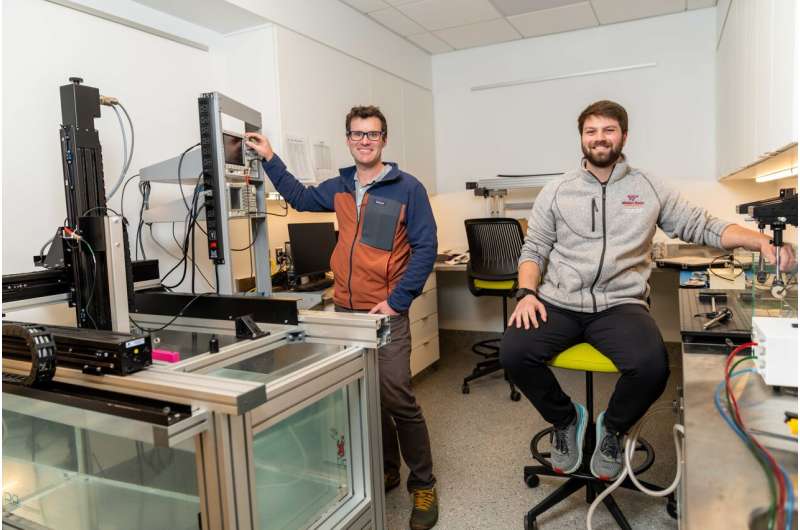In a study published in the Journal of Neuroscience, scientists demonstrated the effectiveness of using low-intensity focused ultrasound to modulate the activity in a critical region in the brain that processes and regulates pain signals.
Researchers, including first author Andrew Strohman, a Virginia Tech M.D.+Ph.D student at the Fralin Biomedical Research Institute, found the application of low-intensity ultrasound to a structure known as the dorsal anterior cingulate cortex reduced pain, diminished bodily responses to pain, and decreased pain-related brain activity without the need for invasive procedures, researchers said.
“This study points to a non-invasive and effective way to modulate a critical region of the brain involved in pain processing, while eliminating many of the risks associated with surgeries,” said Wynn Legon, assistant professor at the Fralin Biomedical Research Institute and senior author of the study. “It provides a potential new means to modulate the brain activity in response to pain that may serve to better understand the mechanisms of chronic pain to provide a new, innovative therapeutic option that could change how we approach and treat pain in the future.”
In a study with 16 healthy volunteers, researchers focused ultrasound energy on the dorsal anterior cingulate cortex to see if it could change how people feel pain. To test whether it changed someone’s perception of pain, they applied brief heat to the skin and measured pain perception, heart rate variability, skin responses, and brain electrical signals.

